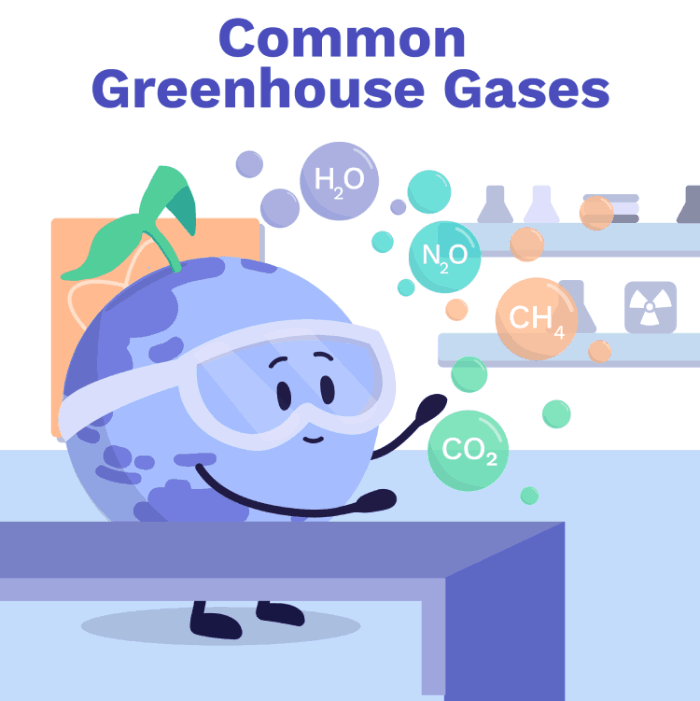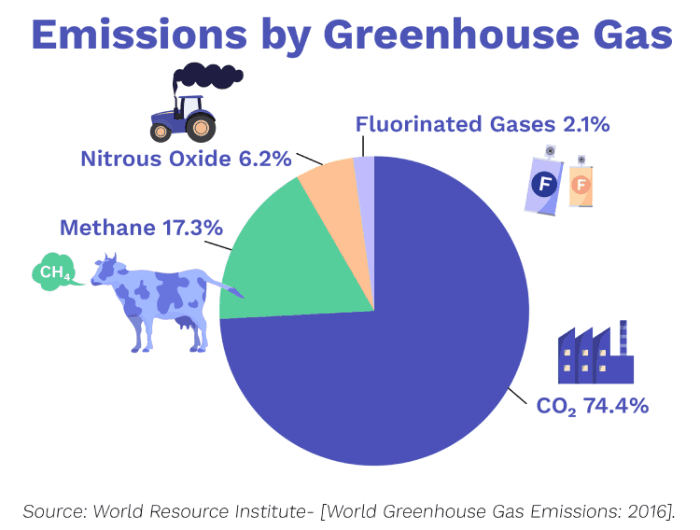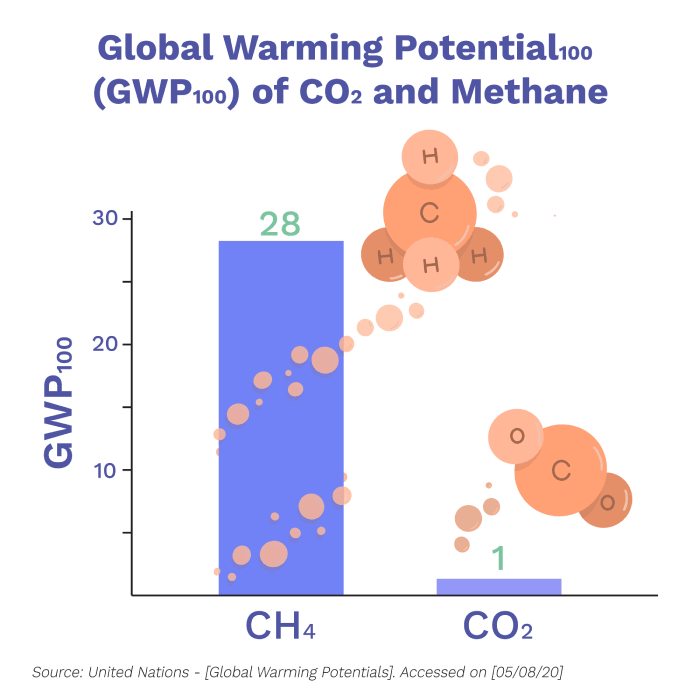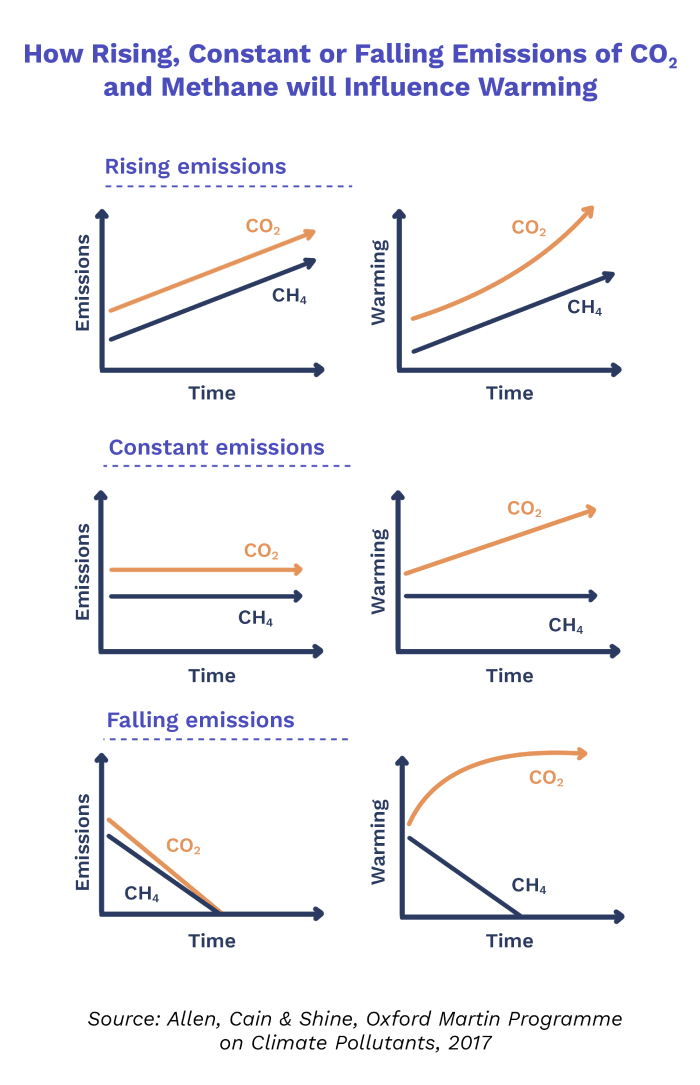Greenhouse Gases: What is Warming Up Our Earth?
8 minute read
Updated on: 29 Aug 2021
Let’s take a look at greenhouse gases in more detail.

There are quite a few greenhouse gases
How much of each greenhouse gas is there in our atmosphere?
Different greenhouse gases differ in their ability to absorb radiation, and how long they stay in the atmosphere (their “lifetime”) .
Fluorinated gases are a family of gases that are emitted in a range of industrial processes, such as the production of refrigerants, aerosol propellants and fire suppressants . They can stay in the atmosphere for thousands of years
.
When comparing greenhouse gases, we need to think about each of these factors: how much heat they absorb, how long they stay in the atmosphere and how much humans emit.
How do we compare greenhouse gases?
The most common way to compare greenhouse gases is by measuring their Global Warming Potential (GWP) .
The GWP measures the relative warming impact of one tonne of a greenhouse gas compared to one tonne of CO₂.
This graph shows the GWP values for greenhouse gases compared to CO₂ for any specific point in time after they were emitted. Because different greenhouse gases stay in the atmosphere for different amounts of time, their GWP can change a lot depending on the time frame you use (e.g. 20 or 100 years) .
Typically we look at the total effect over a number of years and not just in the moment. This is to account for differences in lifetime :
- GWP20: total warming of a greenhouse gas compared to CO₂ after 20 years
- GWP100: total warming of a greenhouse gas compared to CO₂ after 100 years
. This one is the most widely used
.
For example, the GWP100 of methane is 28, meaning that one tonne of methane would have 28 times the warming impact of one tonne of CO₂ over a 100-year period . This ‘warming impact’ is measured as radiative forcing, the impact that it has on altering the balance of incoming and outgoing radiation between the Earth and atmosphere
.
GWP values are used to combine the different greenhouse gases into one measure of emissions. This is called carbon dioxide equivalents (CO₂e) and tells you how much CO₂ would cause the same amount of warming as a specific quantity of another greenhouse gas .
We calculate CO₂e by multiplying the amount of emissions of a specific greenhouse gas by its GWP100 factor . To continue with the example above, 2 kg of methane with a GWP of 28 would produce 56 kg CO₂e. Now that we know how to compare greenhouse gases, let’s look at each one in more detail.
Carbon Dioxide (CO₂)
CO₂ is the single most important greenhouse gas directly released by human activity. It is produced in high quantities by human sources, and stays in the atmosphere for a long time
.
Methane (CH₄)
Methane’s lifetime in the atmosphere is much shorter than CO₂ but it is more efficient at trapping radiation .
Nitrous Oxide (N₂O)
Nitrous oxide has a much greater GWP than CO₂, but less is emitted, and from fewer sources, so it has less of an impact on the global climate at present .
Fluorinated Gases
Fluorinated gases can stay in the atmosphere for thousands of years and have a high GWP, but emissions are lower than those of other greenhouse gases. An example of a fluorinated gas is HCF-23 (CHF₃)
.
Is GWP100 a good way to compare greenhouse gases?
GWP100 and CO₂e are commonly used measures that are quite simple and easy to use. But good scientists should always think carefully about what their measurements really mean. GWP100 and CO₂e overstate the importance of greenhouse gases with a short lifetime .
We have seen that methane has a higher GWP100 than CO₂ but in reality, although methane has a strong warming influence when it is first emitted, this decreases rapidly over a few decades . CO₂ however, builds up in the atmosphere so continues to cause warming year after year
.
If emissions of methane fall to zero, the warming will stop fairly quickly. But if CO₂ emissions reach zero, the CO₂ already in the atmosphere will continue to warm the Earth for a long time!
Is there a better way of comparing greenhouse gases?
Any metric that is suitable for long-term impacts would be misleading for short-term impacts, and the same is true the other way around . Using a metric that changes over time would help but would be more complex and involve more uncertainty
.
Conclusions
Humans releasing greenhouse gases into the atmosphere are causing rapid climate change . We have looked at different greenhouse gases and how much they each contribute to global warming.
In the next chapters, we will look at where these emissions come from.
Next Chapter






